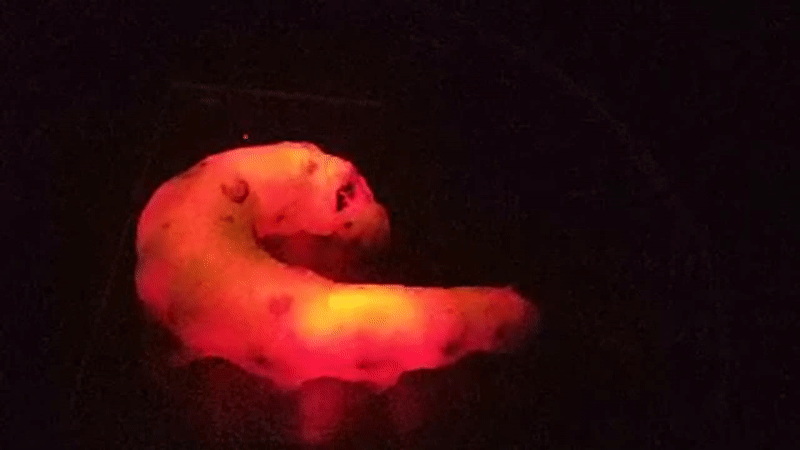Earth Optimism
Could High-Flying Kites Power Your Home?
Nearly a dozen companies are betting on computer-controlled, airborne wind energy to electrify the future
The Science Behind Those Big Ol' Puppy-Dog Eyes
Our canine friends evolved extra muscle fibers around their eyes and mouths that allow them to make facial expressions humans find adorable
The World's Favorite Scent Is Vanilla, According to Science
Some smells are perceived as more pleasant than others, which means preferences for certain odors could have evolutionary roots in our past
Study Finds Hundreds of Mammals Are Waiting to Be Discovered
New species may be hidden in areas that have more comprehensive geographic ranges with high variability in temperature and precipitation
Researchers Are Closer to Creating Hypoallergenic Cats Using CRISPR Technology
The allergen-causing protein Fel d 1 was removed from feline cells using the gene-editing tool
A Welcome Comeback for Norway's Walruses
A hunting ban has fostered the return of a nearly extinct species
Why Did the Salamander Cross the Road?
To reproduce, of course. And a band of volunteers gathers at night to help it—and countless other amphibians—get to the other side
This Historic Community Is Pushing the Nation Toward a Wind Power Revolution
Block Island, off the New England coast, overcame political strife to lead the way on energy independence
Stan the T. Rex Will Be the Star of a New Museum in Abu Dhabi
The natural history museum will chronicle the story of the universe and life on Earth with a focus on the Arabian Peninsula's flora and fauna
Genetically Modified Lettuce May One Day Help Space Travelers Fight Bone Loss
The vegetable could provide fresh leafy greens to astronauts' diet while providing a new way to transport and consume medications in the cosmos
Tiny, Solar-Powered Sensors Fly Through the Air Like Dandelion Seeds
The battery-free devices could be used to gather environmental data over long distances and provide insights into an ecosystem's health
New Rainbow-Colored, Deep-Sea Fish Officially Described by Scientists in the Maldives
The new-to-science species was named after roses, the Maldivian national flower
Science Twitter's 'InverteButt Week' Puts Backsides on Display
The behinds of spineless organisms are diverse among species and serve a multitude of purposes beyond expelling waste
Adopted Lone Narwhal Traveling Among Belugas Could Produce Narluga Calves
The mammal, now reaching sexual maturity, could mate soon, giving researchers more insight into the previously elusive hybrid animals
Silkworms Fed Quantum Dots Shine Bright Under Ultraviolet Light, Produce Fluorescent Red Silk
Caterpillars that ate carbon dots derived from mulberry leaves glowed a scarlet color that lasted until the second generation of worms
Scientists Propose the Creation of a Global Aquatic Sound Library
The first-ever international audio collection of aquatic ecosystems would aim to uncover unidentified fish species, discover regional dialects and more
Meet Linda the Ostrich, the National Zoo's Newest Animal Ambassador
The large feathery friend is four years old and arrived at the Zoo in November 2021
After 35 Years of Recovery Efforts, Bald Eagles Are No Longer Considered Endangered in Vermont
The state first listed the raptors as endangered in 1987
James Webb Space Telescope's First Look at Outer Space Is a Kaleidoscope of Faint Starlight
As NASA astronomers adjust its mirrors over the next month, the dots of light will eventually align into one image of a star in Ursa Major
Astronomers Spot First Lone, Free-Wheeling Black Hole in the Milky Way Galaxy
The massive void, zipping at 28 miles per second, may have been blasted into space by a supernova explosion
Page 3 of 16
:focal(512x334:513x335)/https://tf-cmsv2-smithsonianmag-media.s3.amazonaws.com/filer_public/7f/63/7f63d3b9-b2aa-4b65-8f0b-28d922c21bc9/gettyimages-1229870454.jpg)
:focal(1426x2045:1427x2046)/https://tf-cmsv2-smithsonianmag-media.s3.amazonaws.com/filer_public/b1/42/b142b2dd-fbb7-4399-a5f8-b25c054aa009/img_9229.jpg)
:focal(2846x1897:2847x1898)/https://tf-cmsv2-smithsonianmag-media.s3.amazonaws.com/filer_public/50/1a/501ad71a-5ee2-415b-bdf3-d256345e7fc7/gettyimages-1072535698.jpg)
:focal(686x610:687x611)/https://tf-cmsv2-smithsonianmag-media.s3.amazonaws.com/filer_public/4d/61/4d61063d-cbf5-45cf-a1c4-f7d245721f66/1920_bicoloredshrew.jpg)
:focal(686x795:687x796)/https://tf-cmsv2-smithsonianmag-media.s3.amazonaws.com/filer_public/81/b9/81b94269-c2a8-484a-ae0c-4e78ae4bc323/atlas.jpeg)
:focal(1500x1000:1501x1001)/https://tf-cmsv2-smithsonianmag-media.s3.amazonaws.com/filer_public/91/25/91252bbd-472e-449f-a0ad-b49e6fc3783c/2020ledoux_018_002_0026.jpg)
:focal(2448x1632:2449x1633)/https://tf-cmsv2-smithsonianmag-media.s3.amazonaws.com/filer_public/45/09/4509e511-57a2-4a17-a614-45ef353bdedb/aprmay2022_a09_amphibianmigration.jpg)
:focal(2295x1744:2296x1745)/https://tf-cmsv2-smithsonianmag-media.s3.amazonaws.com/filer_public/c8/00/c800b258-4340-43b2-9b45-4aef5d5cbdc9/aprmay2022_e06_offshorewindfarmturbines.jpg)
:focal(2838x1824:2839x1825)/https://tf-cmsv2-smithsonianmag-media.s3.amazonaws.com/filer_public/58/bc/58bc17d3-3fd6-4345-b87b-2229780de610/gettyimages-1228542334.jpg)
:focal(640x360:641x361)/https://tf-cmsv2-smithsonianmag-media.s3.amazonaws.com/filer_public/5b/a3/5ba357bd-dc41-42ce-9b4a-2482108f6b4a/romaine_rotate_resize.jpg)
:focal(750x500:751x501)/https://tf-cmsv2-smithsonianmag-media.s3.amazonaws.com/filer_public/c4/66/c466e7f3-d7ea-4fa9-b2d9-c2a231fc0f5b/dandelionsensorsweb002.jpg)
:focal(302x242:303x243)/https://tf-cmsv2-smithsonianmag-media.s3.amazonaws.com/filer_public/86/55/8655aa08-f7b8-4f0a-a66c-7331c2634044/cirrhilabrus_finifenmaa_release_1.jpeg)
:focal(1134x857:1135x858)/https://tf-cmsv2-smithsonianmag-media.s3.amazonaws.com/filer_public/ea/af/eaaf54ad-c558-47e6-b5ce-ecc5290637e9/41694106690_4d8b53e579_o.jpg)
:focal(1120x417:1121x418)/https://tf-cmsv2-smithsonianmag-media.s3.amazonaws.com/filer_public/8d/37/8d3788e6-8698-4421-94e7-e404b6241aa1/screen_shot_2022-03-08_at_113907_am.png)

:focal(517x298:518x299)/https://tf-cmsv2-smithsonianmag-media.s3.amazonaws.com/filer_public/dc/86/dc866f01-77b9-45b0-abf7-2eb6d0588fa5/humpback_whale_underwater_shot.jpeg)
:focal(875x110:876x111)/https://tf-cmsv2-smithsonianmag-media.s3.amazonaws.com/filer_public/f5/2e/f52e26de-8406-4af0-95dd-c2508c344cdc/20220121-gilmyers-001-ostrich-linda-web.jpeg)
:focal(2253x1502:2254x1503)/https://tf-cmsv2-smithsonianmag-media.s3.amazonaws.com/filer_public/e8/12/e8121470-2918-481f-a378-fd8d663b0312/gettyimages-552604873.jpg)
:focal(102x117:103x118)/https://tf-cmsv2-smithsonianmag-media.s3.amazonaws.com/filer_public/e3/c7/e3c79fc5-8ef0-4210-94ea-1e0bd3fd525b/alignment_mosaic_compressed-1536x1041.jpeg)
:focal(640x433:641x434)/https://tf-cmsv2-smithsonianmag-media.s3.amazonaws.com/filer_public/1e/f4/1ef45915-7e95-4091-8161-0d7e7c89f877/black_hole_in_the_universe.jpg)